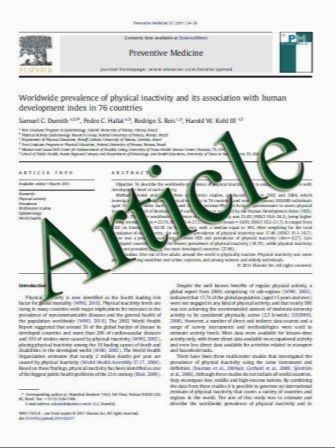Experimental coronary vein obstruction in sheep: changes in haematological and inflammatory markers
- نوع فایل : کتاب
- زبان : انگلیسی
- مؤلف : Fatemeh Dehghani Nazhvani & M. B. Sharifkazemi & S. N. Dehghani & S. Nazifi & M. Shafa
- چاپ و سال / کشور: 2011
Description
It has been suggested that obstruction of coronary veins can induce myocardial infarction similar to coronary artery obstruction. In this study, the coronary veins of the sheep heart were blocked experimentally and haematological and inflammatory indices (haptoglobin, serum amyloid A, tumour necrosis factor-α and interferon-γ) alterations were studied. Twenty sheep were used for this study. Anaesthesia was induced by ketamine and maintained using halothane. The intercostal space between ribs 4 and 5 was incised, the thorax was opened and the pericardium was incised. In the control group (1), only the myocardium was manipulated. In the second group, three to four superficial coronary veins were totally ligated. In the third group, three to four superficial coronary veins were partially ligated. In the fourth group, five to ten superficial coronary veins were totally ligated. In the fifth group, five to ten superficial coronary veins were subtotally ligated. Then, the intercostal space was sutured. Post-operative care included clinical evaluation, antibiotic therapy, anti-inflammatory drugs and collection of jugular vein blood for haematological and inflammatory index evaluation on days 0, 1, 2, 3, 4, 5, 8, 12, 15, 25 and 35 post-operatively. Red blood cell count, haematocrit and haemoglobin concentrations were similar in all groups. The leukocyte count following an operative procedure initially showed an increase, followed by a reduction back to normal values, in all groups. The increase in the first 5–7 days was significant. The differential leukocyte count in all groups increased initially and then reduced to normal values. Inflammatory index parameters, including acute phase proteins and inflammatory mediators, initially increased and then decreased in all groups after surgery. Healing in damaged tissues and physiological adaptation to the experimental cardiac condition caused a decrease in inflammatory parameters. No significant difference between groups was seen in the inflammatory parameters (P>0.05) because of the same condition of inflammation due to the surgery and cardiac necrosis, regardless of the outcome.
Comp Clin Pathol DOI 10.1007/s00580-011-1309-1 Received: 17 February 2011 / Accepted: 18 July 2011


